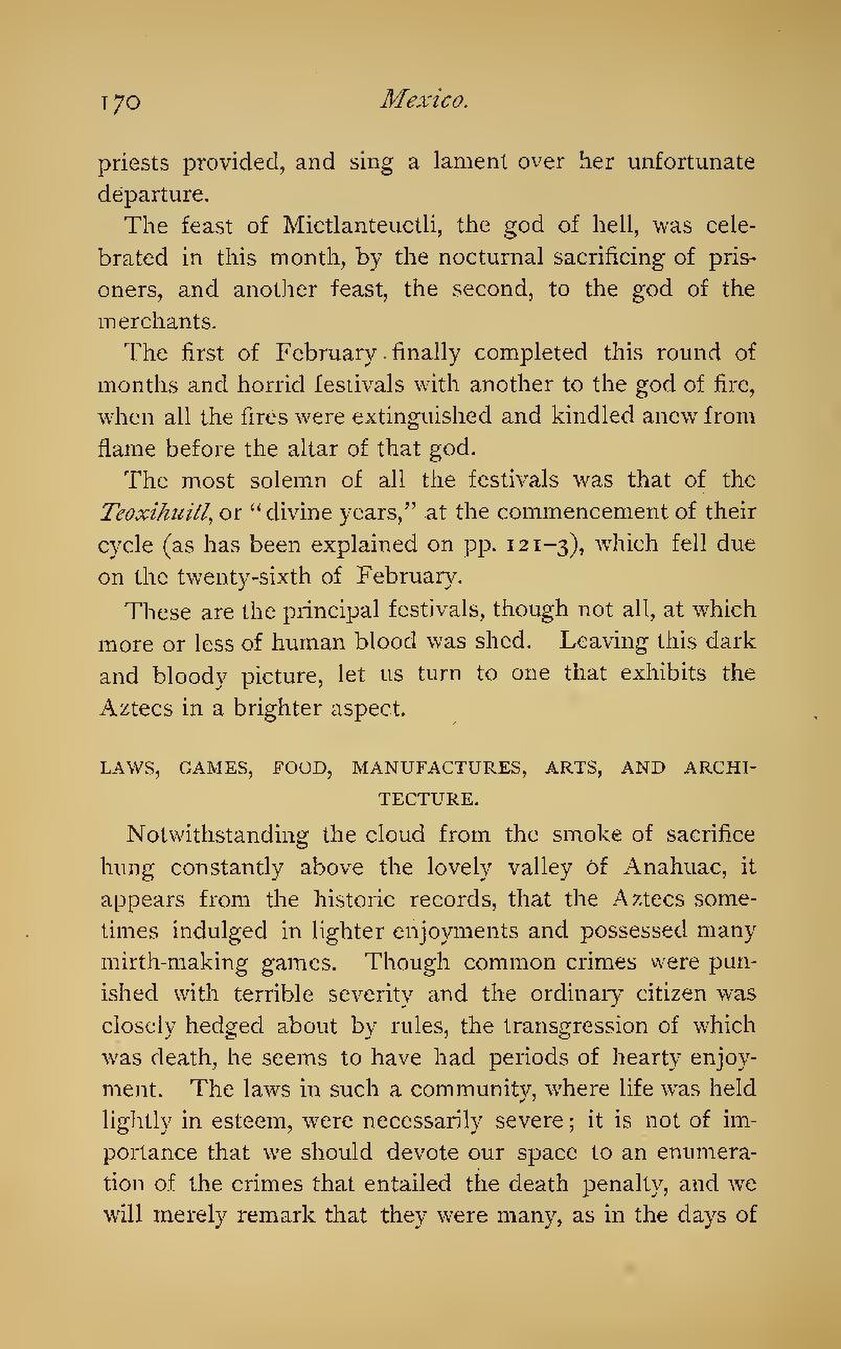priests provided, and sing a lament over her unfortunate departure.
The feast of Mictlanteuctli, the god of hell, was celebrated in this month, by the nocturnal sacrificing of prisoners, and another feast, the second, to the god of the merchants.
The first of February finally completed this round of months and horrid festivals with another to the god of fire, when all the fires were extinguished and kindled anew from flame before the altar of that god.
The most solemn of all the festivals was that of the Teoxihuitl, or "divine years," at the commencement of their cycle (as has been explained on pp. 121-3), which fell due on the twenty-sixth of February.
These are the principal festivals, though not all, at which more or less of human blood was shed. Leaving this dark and bloody picture, let us turn to one that exhibits the Aztecs in a brighter aspect.
LAWS, GAMES, FOOD, MANUFACTURES, ARTS, AND ARCHITECTURE.
Notwithstanding the cloud from the smoke of sacrifice hung constantly above the lovely valley Of Anahuac, it appears from the historic records, that the Aztecs sometimes indulged in lighter enjoyments and possessed many mirth-making games. Though common crimes were punished with terrible severity and the ordinary citizen was closely hedged about by rules, the transgression of which was death, he seems to have had periods of hearty enjoyment. The laws in such a community, where life was held lightly in esteem, were necessarily severe; it is not of importance that we should devote our space to an enumeration of the crimes that entailed the death penalty, and we will merely remark that they were many, as in the days of
